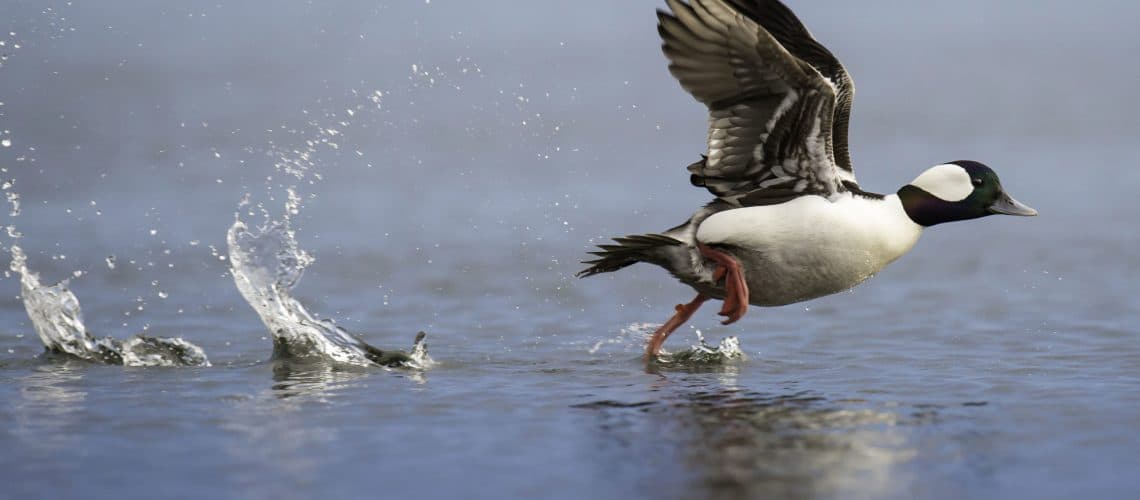
The bufflehead duck is a small sea duck, with its name derived from Ancient Greek for it’s oddly bulbous head shape of the species. They range from a foot and half long and weigh up to a pound and half with males slightly larger than the females.
Bufflehead ducks suddenly vanish and reappears as it feeds, spending winters bobbing in bays, estuaries, reservoirs, and lakes. These diving birds eat primarily insects but in saltwater, they will feed predominantly on crustaceans and mollusks. Aquatic plants and fish eggs are also a source of food if other items are not readily available.
Adult males are striking black and white, with glossy green and purple heads and a large white patch behind the eye. Females are grey-toned or subdued ash brown with a smaller white patch behind the eye and a light underside. They like to nest in old woodpecker holes, particularly those made by Northern Flickers, in the northern forests of North America. The females may return to the same nest site, year after year, nesting in tree cavities of primarily aspens or poplars.
Unlike most ducks, the Bufflehead is mostly monogamous, often remaining with the same mate for several years. While they normally live only in North America, they occasionally show up elsewhere in the winter – places like Japan, Greenland, Iceland, the British Isles, Belgium, France, Finland, and Czechoslovakia. For the most part, these wayward birds may have escaped from captivity.
The oldest Bufflehead on record was almost 19 years old – was caught and re-released in 1975. 500,000 year old Bufflehead fossils have been found throughout America, in states such as Alaska, California, Florida, Illinois, Kansas, Texas, and Washington. One such fossil that was found resembled a modern Bufflehead duck and was dated to be about two million years old.
